This page contains paid links (details here) as well as links to the official ReptiFiles store. Purchases made from these links help fund my reptile welfare research and educational efforts. Thank you for your support!
There is a common misconception about ball pythons that large enclosures stress them out, and they prefer to be crammed in tiny, dark plastic boxes or undersized terrariums where they barely have enough room to move or even stretch out. THIS IS A MYTH — and this approach to ball python care often leads to severely overweight snakes with poor muscle tone and no sources of mental stimulation or enrichment.
In other words, keeping adult ball pythons in undersized enclosures is not the “best” way you can care for them — it’s actually a violation of basic animal welfare.
Here are the minimum dimensions for your pet ball python enclosure, based on snake size. All dimensions are given in Length x Width x Height.
- Hatchlings up to 300g can be housed in a 10 gallon enclosure or tub measuring approximately 20″ x 11″ x 13″ (50 x 28 x 33cm).
- Juveniles under 3′ long can be housed in a 36” x 18” x 18” (90 x 45 x 45cm) or larger. They can also be housed in a long-term “adult” enclosure as long as sufficient cover and places to hide are provided (see the Decor page of this guide).
- Subadults and adults over 3′ long do best in a 48″ x 24″ x 24″ (120 x 60 x 60cm) or larger. If you choose alternative dimensions, make sure there’s about 8 sq ft (0.74m) of floor area and at least 2′ of vertical space for climbing — preferably more, especially for males.
In other words, ball pythons (and snakes in general) should be housed in an enclosure which is at least as long as they are. This provides sufficient space to allow them to stretch out to their full length instead of being cramped and semi-coiled all the time. This means that a 5′ ball python should be housed in a 5′ long enclosure, a 6′ ball python should be housed in a 6′ long enclosure, etc. Providing additional height to accommodate natural climbing behavior is best practice.
Types of Ball Python Enclosures
Glass: Contrary to popular belief, glass enclosures (aka aquariums) are not evil. They do tend to be expensive, heavy, not very durable, and can present some trouble with maintaining consistent temperatures and humidity. But it’s because of that latter quality, glass is one of the best materials at dissipating heat, and that it makes creating a temperature gradient much easier. It also helps encourage a natural cycle of drying in the enclosure, which discourages mold growth in a humid environment that could otherwise go out of control very easily.
When done right, glass enclosures are very attractive and easy to clean. For best results, cover 3 of the enclosure’s 4 walls with an opaque material like construction paper to help your ball python feel optimally secure in his/her environment.
ReptiFiles recommends the following glass enclosures for ball pythons:
PVC/HDPE: These enclosures can also be quite attractive, easy to clean, hold humidity well, are lightweight, and are more durable than their glass counterparts. They’re also opaque on all sides but the front, and of course front-opening. The best PVC enclosures have a mesh top for easier and safer lamp fixture placement as well as improved ventilation.
ReptiFiles recommends the following PVC enclosures for ball pythons:
- Zen Habitats
- Dubia.com
- Kages (recommended only with “2 square screens” customization)
- Toad Ranch Luxury Reptile Habitats
Lock it Down
It’s best to choose a front-opening enclosure, as it makes accessing the snake much easier (and less startling for the snake). Front-opening enclosures are also more secure and more difficult for a snake to escape from.
If for some reason you must use a glass enclosure with a screen top, be sure to get lid locks; like many snakes, ball pythons can be expert escape artists, and it can be very difficult to find a small snake hiding in your house. DO NOT SECURE YOUR LID WITH TAPE! Many snakes have been severely injured through accidental contact with the sticky side of tape.
How often should I clean my ball python terrarium?
Regularly — The enclosure should be spot-cleaned (removal of visible waste) every time your snake defecates. This also involves the removal and replacement of contaminated substrate, as well as the cleaning of any visibly dirty décor.
Every 3-4 months — Replace the substrate.
Every 6 months — The enclosure and all accessories should be deep-cleaned with F10SC, Rescue, or a 10% bleach solution 2x/year.
Is it okay to house two ball pythons together?
No. Snakes are solitary animals, so they don’t get lonely. In fact, they’re perfectly happy with their own room. Roommates can make them feel threatened, which can make the snake stop eating and get sick. There have even been some documented cases of ball python cannibalism.

